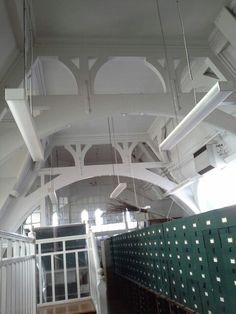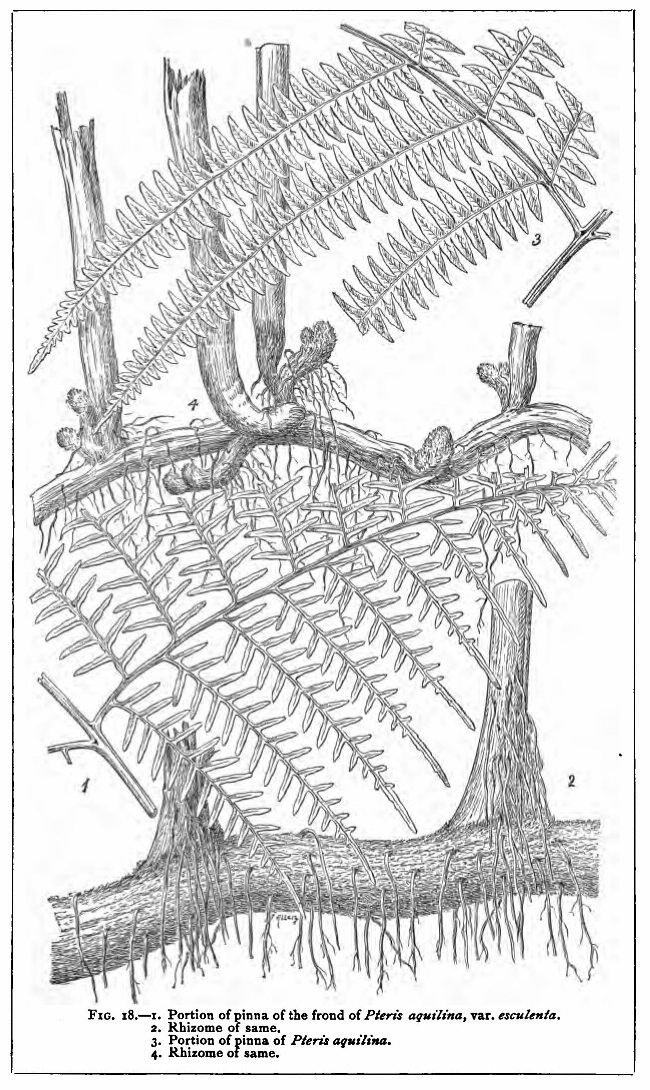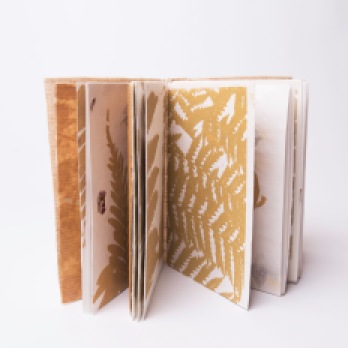Botanists
Good wildlife spotting everyone!
With everyone staying close to home, this year the wildlife spotting for the City Nature Challenge has been really urban. If you have more images taken over the weekend, you can still upload them now into iNaturalist and your sighting will be added into the count. Otherwise, it’s time to try and identify all those finds! Let’s see how many we can push to be research grade records.
I suspect we’ve had far more pavement weeds this year than we did last year. Certainly, last year the top three organisms recorded where blackbirds, harlequin ladybirds and wood pigeons. So far this year, our top three are cuckooflowers, Herb Robert and dandelions. Of course, although the weekend of wildlife spotting is over, we’ve now got time to make sure as many records as possible are properly identified, so that list could change.
Happily, although everyone was limited to gardens and short walks, the weather was much kinder than last year allowing us to really enjoy our local wildlife. There have been plenty of bee and butterfly garden visitors and the occasional bird to watch as well as all the plants. If you have enjoyed a weekend of wildlife recording, check out Greater Manchester’s Local Record’s Centre so that you can continue putting nature on the map. There’s also advice from the Wildlife Trust for Lancashire, Manchester and North Merseyside on how to improve your garden for wildlife. Click here to apply for a free downloadable booklet from the My Wild City Manchetser project.
The City Nature Challenge weekend has been popular across the country with over 4,000 people taking part and just under 60,000 observations made. If know of a city or region that would want to take part next year, then get in touch with the organisers. The City Nature Challenge was invented and is managed by the Natural History Museum of Los Angeles County and California Academy of Sciences: https://citynaturechallenge.org/
#BotanicMonday
A few images from the herbarium recently

Archives and labels are a gold mine of information in Herbarium collections #botanicMonday @Nat_SCA

It’s #BotanicMonday and also #chocolateweek! Here’s a German teaching poster of the plant that produces the cocoa bean

Plant models aplenty #BotanicMonday

106 years old and still living up to its name – Showy pink oregano (Origanum sipyleum) #BotanicMonday

Joanne B Kaar @Joannebkaar Oct 15
More back rooms of @McrMuseum in herbarium @Aristolochia
photos from my recent research visit
packaging
labels
#lichen
I’m inspired
Stirring the hornet’s nest – are natural science collections even legal?
I was wrapping up a particularly difficult male peacock with a helper a few weeks ago and we were discussing natural science collections. “Do you think one day they’ll just be made illegal?” she asked, straight-faced and sincere. I was miffed – this was someone saying to a natural science curator that really, it shouldn’t be allowed. I sighed and spent the rest of the wrapping session (porcupine was also tricky) explaining how wonderful – and legal – natural science collections are.
View original post 670 more words
contemporary photography – ferns 2
Hi I’m Megan Jones current student, I previously posted about a project where I was granted access to photograph a section of the extensive herbarium collection at the museum. https://herbologymanchester.wordpress.com/2016/03/29/contemporary-photography-ferns/ As promised I have an update on the project now it has come to an end, after visiting the museum I took my images and wanted to experiment more with them.
I decided to experiment with screen printing for those who aren’t aware of this process, your image is transferred onto a ‘screen’ you then place a piece of paper underneath the screen placing ink at the top of the screen you spread the ink across the screen and this causes the ink to be pushed through creating a copy of your image on to the paper. I repeated this with all of the most successful images from my visit at the museum until I had a great collection, I then bound these into a handmade book using a long stitch wrap around style. Included in this book was my images once they had been processed with the screen printing technique and also some information on global warming as this was the theme at the museum during my visits, I felt it necessary to include some information in the finished project as this is where my inspiration seemed from at the start.
Thank you for taking the time to catch up on the development of my project.
Megan Jones
Advent Botany 2016 – Day 24: Professor Vernon Heywood — Culham Research Group
By DrM Vernon and Christine Heywood (photo: Stephen Jury) Dr M introduced to #adventbotany this year, #adventbotanists, botanists whose birthdays fall within advent. The first featured Erasmus Darwin a great botanical mind from a bygone age. Dr M’s second #adventbotanist features Vernon Heywood, born on 24th December 1927, widely recognised as a world authority on…
via Advent Botany 2016 – Day 24: Professor Vernon Heywood — Culham Research Group
Advent Botany 2016 – Day : The beauty of snowflakes microscopic algae — Culham Research Group
By Isabelle Charmantier Bicosoeca growing on AsterionellaAh, the snowflake: symbol of short winter days, crisp frosty mornings, Carol singing under the stars and the Christmas season. However, this is not a snowflake. It is a photograph of the mass development of the flagellate protozoan Bicosoeca on Asterionella. Asterionella is a genus of pennate freshwater diatoms,…
via Advent Botany 2016 – Day : The beauty of snowflakes microscopic algae — Culham Research Group
Rhododendrons of the J. D. Hooker Collection
By Berglind Kristjansdottir
The Herbarium has a lot of specimens collected by Joseph Dalton Hooker (f. 1817, d. 1911). Most of them are from his expedition to India were he collected plants in and around the Himalayas.
Sir Joseph Dalton Hooker and his Exploration of Nepal and Sikkim
Sir Joseph Dalton Hooker was born in Halesworth, Suffolk in 1817. He spent his childhood in Glasgow were he helped his father with his herbarium which nurtured his keen interest in plants. Later in his life he would become one of the key scientists of his age and the most important botanist of the nineteenth century.
Hooker was only 15 years old when he entered the Glasgow University to study medicine. There he met Charles Darwin, who became one of his closest friends, and Captain James Clark Ross. Ross was about to lead a British Association expedition to the Antarctic and Hooker was determined to join. His father helped his 22 year old son to get the position of assistant ship’s doctor and botanist. On 28 September 1839 Hooker sailed out of the Medway and didn’t return until four years later. During the trip he was able to botanize on three continents as the ship visited Madeira, the Cape of Good Hope, Tasmania, New Zealand, Australia, the Falkland Island and the Southern tip of South America. His discoveries led to the foundation for his authority on the geographical distribution of plants, which later would prove vital to Darwin and his theory of evolution.
When Hooker came back to England in 1841 he was determined to make a study of tropical botany to compare to the Antarctic and on 11 November 1847 he left for a two year plant hunting trip to Sikkim on behalf of Kew. He arrived at Darjeeling on 16 April 1848. Hooker wanted to travel to Sikkim’s high mountain passes but to do that he needed permission from the Rajah. It took Hooker almost a year to get Sikkimese authorities to approve his application and on 27 October 1848 he was finally able to set out for Sikkim with his party of fifty-five men. The trip to the passes wasn’t easy. There were no proper roads to follow and they had to travel by foot. As winter approached the conditions deteriorated. The expedition got more and more dangerous and Hooker and his party had various complications on the way like imprisonment by the Dewan of Sikkim and lack of supplies and food.
The Himalayan expedition took Hooker three years and made him the first European to collect plants in the Himalaya. He collected a lot of important and special plants while he was there but the discovery and introduction into English gardens of the numerous and gorgeous Sikkim Rhododendron was certainly one of his greatest achievements. Out of forty-three species he collected thirty who were considered new to botanists, and most of the others were yet unknown to them.
Rhododendrons of the Sikkim-Himalaya
Rhododendron grande
In May 1848 Hooker first experienced the excitement of discovering a new rhododendron. He found the ivory-white-flowered Rhododendron grande (R. argenteum) at the top of Mt Sinchul south east of Darjeeling. In his book Himalayan Journals Hooker described this plant as a:
“…tree forty feet high, with magnificent leaves twelve to fifteen inches long, deep green, wrinkled above and silvery below, while the flowers are as large as those of R. Dalhousie and grow more in a cluster. I know nothing of the kind that exceeds in beauty the flowering branch of R. argenteum, with its wide spreading foliage and glorious mass of flowers” (Hooker, 2016).
Rhododendron falconeri
Later in May when he was in Mt Tonglo he found Rhododendron falconeri which has reddish bark and beautiful bell-shaped yellow flowers. Hooker described it as:
“…in point of foliage the most superb of all the Himalayan species, with trunks thirty feet high, and branches bearing at their ends only leaves eighteen inches long: these are deep green above, and covered beneath with a rich brown down” (Hooker, 2016).

Rhododendron campylocarpum
In the Yangma valley at the Yangma Pass (16,168ft) he found the graceful Rhododendron campylocarpum. In the book Rhododendrons of the Sikkim-Himalaya (1849-1851) Hooker described the plant as:
“A small bush, averaging six feet in height, rounded in form, of a bright cheerful green hue, and which, when loaded with its inflorescence of surpassing delicacy and grace, claims precedence over its more gaudy congeners, and has always been regarded by me as the most charming of the Sikkim Rhododendrons” (Hooker, 1849).
Rhododendron maddeni
Rhododendron maddeni is one of the “original” rhododendrons first introduced from the Himalaya by Hooker in the mid-1800s. It was named for Lt.-Col. E. Madden, a member of the Bengal Civil Service. In Rhododendrons of the Sikkim-Himalaya Hooker wrote:
“I do myself the pleasure to name this truly superb plant in compliment to Major Madden of the Bengal Civil Service, a good and accomplished botanist, to whose learned memoirs on the plants of the temperate and tropical zones of North-west Himalaya, the reader may be referred for an excellent account of the vegetation of those regions. The same gentleman’s paper on the Coniferae of the north of India may be quoted as a model of its kind” (Hooker, 1849).
Rhododendron arboreum
Rhododendron arboreum is an evergreen shrub or small tree with a showy display of bright red flowers. It is found in Bhutan, China, India, Myanmar, Nepal, Sri Lanka and Thailand. Rhododendron arboreum is the national flower of Nepal and in India it is the state tree of Uttarakhand and state flower of Himachal Pradesh and Nagaland. R. arboreum was first of the Indian Rhododendrons to be discovered. In Rhododendrons of the Sikkim-Himalaya it says:
“Towards the very close of the 18th century, namely in 1700, R. arboreum, the first of a new form and aspect of the genus, and peculiar to the lofty mountains of India Proper, was discovered by Captain Hardwicke, in the Sewalic chain of the Himalaya, while he was on a tour to Sireenagur. The species has since been found to have a very extended range” (Hooker, 1849).
References
Desmond, R. (1990). Sir Joseph Dalton Hooker Traveller and Plant Collector. Woodbridge, Suffolk: The Antique Collectors’ Club.
Hooker, J. D. (1849). Rhododendrons of the Sikkim-Himalaya. London: Reeve, Benham, and Reeve.
Hooker, J. D. (2016). Himalayan Journals (first published 1854). Oxon: Routledge.
Musgrave, T. Gardner, C & Musgrave, W. (1998). The Plant Hunters. London: Ward Lock.


































